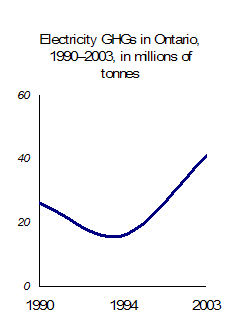Stephen Harper’s Kyoto dilemma (see my June 18 post) might be transforming into a glorious electoral opportunity, thanks to an initiative coming from the Prime Minister’s favourite province.
Quebec Sustainable Development minister Claude Bechard told Broadcast News today he wants federal money to help curtail Quebec’s greenhouse gases (GHGs). This follows last week’s announcement from Bechard’s boss, premier Jean Charest, that Quebec wants to impose a carbon tax on gasoline.
Why is this an opportunity for Harper? Because if he forks over money to Quebec for Kyoto, and does the same for other provinces that choose to implement their own Kyoto plans, he could resolve a growing problem—the alleged fiscal imbalance. If we just consider Quebec, imagine the dividends Harper could reap by handing Charest a check to implement Kyoto. With this move, Harper would silence those who call him a Kyotophobic, federalist cheapskate. He gets a big fat gold star in Quebec, which puts him into an excellent position to grab Liberal and Bloc seats in the next election.
A similar electoral calculus easily applies to the other large central Canadian province, whose biggest metropolitan area shunned the Conservatives on January 23. Torontonians generally like Kyoto, and do not expect Harper to do much on the file. A positive, unexpected move on Kyoto might jar them free of their big-city revulsion for all things Conservative.
The beauty of this (for Harper at least) is that it is totally optional: Bechard’s proposal could be tweaked so that if an anti-Kyoto province doesn’t want to join, it doesn’t have to. Harper is thereby spared the excruciating prospect of foisting another National Energy Plan on his home base.
Bechard is reportedly canvassing other provinces, including Ontario, to see if there’s any interest in approaching Harper as part of a unified coalition of pro-Kyoto provinces.
I’m not Dalton McGuinty, but if I were I’d think hard about Bechard’s proposal. Ontario’s premier just decided to implement Kyoto by approving a new round of nuclear-power construction (though he remains reticent about saying it publicly for fear of offending die-hard anti-nuclear greens, who for some incomprehensible reason he feels are a strategically important constituency).
New nukes will cost billions, and McGuinty will want to minimize the risk of Darlington-esque construction delays. Could the federal government, as the country’s ultimate risk manager, play a role here?
It definitely could—and should. McGuinty has also been harping on about the alleged fiscal imbalance, in a bid to gather support from his fellow premiers. His efforts so far have been unsuccessful. Could federal money for new nuclear reactors help the premier turn an embarrassing non-starter into a fiscal and political—and environmental—triumph? Stay tuned.


